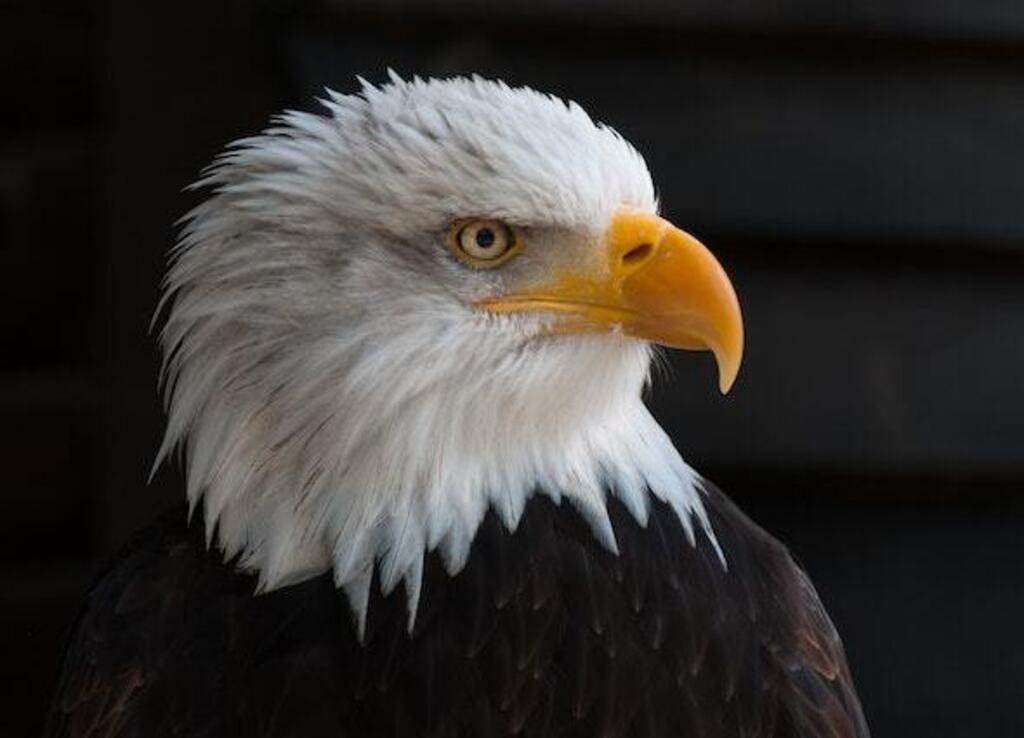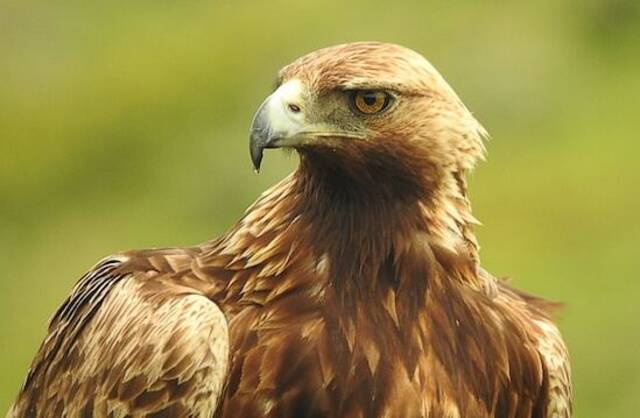Eagles are one of the most majestic and powerful birds on the planet. Their keen eyesight and impressive hunting skills have captivated human interest for centuries.
One of the most intriguing questions about eagles is whether they can see in the dark. This is a question that has puzzled scientists and bird enthusiasts alike for years.
Understanding the vision of eagles is crucial to appreciating their role in the ecosystem and the benefits they provide to humans.
Their eyesight is much different than that of humans, and the ability to see in the dark would provide a significant advantage for hunting and survival.
In this article, we will explore the importance of vision for eagles, how their eyesight compares to humans, and the science behind how they see.
We will also examine the limitations to their vision, the role of eagle vision in their ecosystem, and the benefits of their vision for humans.
Finally, we will discuss the importance of protecting eagle populations and their habitats.
Table of Contents
- 1 Key Takeaways
- 2 The Importance of Vision for Eagles
- 3 Eagle Eyesight Compared to Human Eyesight
- 4 Understanding How Eagles See
- 5 Can Eagles See In The Dark?
- 6 Hunting in Low-Light Conditions
- 7 Limitations to Eagle Eyesight
- 8 Comparing Eagle Vision to Other Animals
- 9 The Role of Eagle Vision in Their Ecosystem
- 10 The Evolution of Eagle Vision
- 11 The Benefits of Eagle Vision for Humans
- 12 Protecting Eagle Populations
- 13 Frequently Asked Questions
- 14 Conclusion
- 15 Author
Key Takeaways
- Eagles have a higher concentration of rod cells, which are responsible for detecting low light levels, but this does not necessarily mean they can see in complete darkness.
- Eagles have cones and rods in their eyes, but their eyes are also equipped with a Tapetum Lucidum, a reflective layer that aids in low-light vision.
- In dimly lit environments, eagles rely on their highly sensitive rod cells to efficiently hunt for prey.
- Despite not having night vision, eagles can spot prey from a distance and can hunt during dawn and dusk.

The Importance of Vision for Eagles
The visual acuity and range of an eagle’s eyesight is crucial for hunting prey and navigating its environment.
Eagles have evolved to have eyes with a high number of light-sensitive cells, known as cones, which allow them to see fine details and colors with exceptional clarity.
This gives them an advantage in hunting, as they can spot prey from great distances and dive with precision to capture it.
Additionally, eagles have adapted to their environment by having a flat, wide field of vision, which allows them to scan their surroundings and detect any potential threats or opportunities.
Without their acute vision, eagles would not be able to survive in the wild.
With this in mind, it is important to compare eagle eyesight to human eyesight, as it provides insight into just how remarkable their visual capabilities truly are.
Eagle Eyesight Compared to Human Eyesight
In terms of visual acuity, humans and eagles differ significantly. Eagles have a much higher resolution and can see finer details than humans.
This is due to their larger eyes and higher density of photoreceptor cells in their retina. Eagles also have a wider field of vision, enabling them to see prey from a greater distance.
Comparing visual acuity between humans and eagles is like comparing a 1080p television to a 4k television. However, when it comes to night vision capabilities, eagles are not necessarily better than humans.
Their eyes have a higher concentration of rod cells, which are responsible for detecting low light levels, but this does not necessarily mean they can see in complete darkness.
Understanding how eagles see in normal lighting conditions is the first step in understanding their hunting techniques.

Understanding How Eagles See
The visual system of eagles is a fascinating topic of research due to their exceptional eyesight.
To understand how eagles see, we need to examine the structures within their eyes.
Eagles, like humans, have cones and rods in their eyes, but their eyes are also equipped with a Tapetum Lucidum, a reflective layer that aids in low-light vision.
Additionally, eagles have binocular vision, which allows them to see with greater depth perception and accuracy.
Cones and Rods in the Eye
Cones and rods are specialized cells in the eye that work together to allow for both color vision and low light vision.
Cones are responsible for color vision, while rods are responsible for night vision.
These cells are located in the retina, the part of the eye that receives and processes light.
Cones are concentrated in the center of the retina, while rods are more abundant in the outer regions.
During the day, cones are the primary cells used for vision, allowing us to see colors and fine details.
At night, however, rods take over, providing us with monochromatic vision that is better suited for low light conditions.
Both cones and rods are crucial for eagle vision, allowing them to see both color and detail during the day and low light vision at night.
With this understanding of the anatomy and function of cones and rods, we can now move on to the next section on the tapetum lucidum.
The Tapetum Lucidum
Located behind the retina in many animals, the tapetum lucidum is a reflective layer that allows for improved night vision.
This layer reflects light back through the retina, giving the photoreceptors a second chance to absorb the incoming light.
The tapetum lucidum is composed of many tiny crystals or fibers that act like mirrors, reflecting light and directing it towards the photoreceptor cells.
This layer is responsible for the glowing eyes of nocturnal animals such as cats, dogs, and eagles.
The reflective layer allows these animals to see in low light conditions, giving them a distinct advantage over their prey.
Although humans do not have a tapetum lucidum, some individuals have a reflective layer behind their retina known as the ‘eyeshine.’
This phenomenon is caused by the reflection of light from the back of the eye and is seen in certain lighting conditions.
The tapetum lucidum is just one example of how animals have adapted to their environments to improve their survival chances.
Moving on to binocular vision, this adaptation allows for depth perception and is essential for predatory animals such as eagles.
Binocular Vision
The Tapetum Lucidum has been established as a key element in an eagle’s visual perception, yet another critical aspect is binocular vision. Eagles have the ability to perceive depth, which is essential when hunting prey.
The following are four ways in which binocular vision enhances an eagle’s hunting ability:
1) It provides a wider field of view, allowing an eagle to spot prey from afar.
2) The overlap of visual fields from both eyes creates a stereoscopic image, enabling the eagle to accurately judge distance and size of prey.
3) Binocular vision allows for better target tracking, as the eagle can follow the prey’s movement with both eyes.
4) Lastly, binocular vision enhances an eagle’s ability to detect camouflaged prey in low-light conditions, as it can detect slight variations in color and texture.
Therefore, binocular vision is a crucial component in an eagle’s visual perception, enabling it to hunt effectively in various environments.
With this in mind, the next section will discuss how eagles hunt in low-light conditions.

Can Eagles See In The Dark?
Yes, eagles have excellent vision, which allows them to see in the dark to some extent. While they are not specifically nocturnal, their eyes are adapted to low-light conditions.
Eagles have a higher number of light-sensitive cells in their retinas called rods, enabling them to gather more available light.
This adaptation helps them hunt and navigate during dusk and dawn when light levels are low. However, their night vision is not as effective as that of true nocturnal birds like owls.
Hunting in Low-Light Conditions
In dimly lit environments, eagles rely on their highly sensitive rod cells to efficiently hunt for prey. These cells are located in the retina and are responsible for detecting light and movement in low-light conditions.
Additionally, eagles have a specialized layer of tissue at the back of their eyes called the tapetum lucidum, which reflects light back through the retina, increasing their ability to see in low light.
To further enhance their hunting techniques, eagles also have a high concentration of cones in their eyes, which are responsible for detecting color and detail.
This allows them to accurately identify prey and distinguish it from its surroundings.
A table to demonstrate the differences in rod and cone cells between eagles and nocturnal predators is shown below:
| Eagle | Nocturnal Predator | |
|---|---|---|
| Rods | Highly sensitive and numerous | Highly sensitive and numerous |
| Cones | High concentration, allowing for color and detail vision | Low concentration, resulting in limited color and detail vision |
Despite their impressive visual capabilities, eagle eyesight does have limitations.
Limitations to Eagle Eyesight
Eagle eyesight, like any other visual system, is not without its limitations that affect their ability to hunt and survive in their environment. While eagles have evolved to have incredible visual acuity, their eyesight is not infallible.
One limitation to their eyesight is their inability to see colors as vividly as humans. This means that they may miss out on certain visual cues that could aid in their hunting.
Additionally, eagles have a relatively small field of vision, which can make it difficult for them to detect prey that is not directly in front of them.
Despite these limitations, eagles have adapted to their environment in remarkable ways, such as developing a keen sense of depth perception and the ability to spot prey from great distances.
These genetic changes have not only benefited eagles but also humans, as scientists have studied eagle eyesight to develop better technology for medical imaging and other applications.
Comparing eagle vision to other animals, it is clear that eagles have unique adaptations that allow them to thrive in their environment.

Comparing Eagle Vision to Other Animals
Like the sharpness of a needle, the visual acuity of an eagle surpasses most other animals in the animal kingdom, including the human eye. However, when it comes to night vision, eagles are not the best.
While they have excellent daytime vision, they can’t see in complete darkness. In comparison, owls have superior night vision due to their larger eyes and the ability to see in low light conditions.
Eagles’ eyes have a high concentration of cone cells, which allow them to see fine details and colors during the day.
On the other hand, owls have a higher concentration of rod cells, which enable them to see in low light and darkness.
Despite this difference, eagles still have an impressive ability to spot prey from a distance and can hunt during dawn and dusk.
In conclusion, while eagles may not have night vision, their ability to see fine details and colors during the day is a vital tool for survival in their ecosystem.
The Role of Eagle Vision in Their Ecosystem
The remarkable visual acuity of eagles plays a crucial role in their ability to survive and thrive in their ecosystem.
Eagle vision’s impact on prey is immense, as they can spot even the smallest movements from far distances, making them formidable hunters.
This ability also sets them apart from other predators and gives them a competitive edge in acquiring food.
In areas where food is scarce, such as mountainous regions, eagles’ sharp vision allows them to locate and hunt prey that other predators may not be able to find.
Moreover, eagle vision and competition with other predators go hand in hand, as their keen eyesight enables them to detect potential threats from afar, giving them a chance to escape danger.
This is essential for their survival, especially in areas where they are not at the top of the food chain.
Ultimately, eagle vision is a critical component of their existence as they rely on it for hunting, avoiding danger, and navigating their environment.
The evolution of eagle vision further highlights its importance in their survival and will be explored in the subsequent section.

The Evolution of Eagle Vision
The evolution of eagle vision is a fascinating subject that sheds light on the adaptation of these birds to their hunting strategies.
Through natural selection, eagles have developed unique visual abilities that allow them to accurately locate and track their prey.
Genetic changes in eye structure have played a significant role in this evolutionary process, making eagle vision one of the most advanced and specialized in the animal kingdom.
Understanding the evolution of eagle vision can provide insights into the ways in which animals adapt to their environments and develop new survival strategies.
Adaptation to Hunting Strategies
Adapting to hunting strategies, eagles have evolved highly efficient visual systems that enable them to spot prey from great distances and in low-light conditions.
Their eyes are uniquely adapted to their hunting techniques, which include both diurnal and nocturnal hunting.
These adaptive techniques include a high density of photoreceptors in the retina, a large cornea, and a deep fovea.
Additionally, eagles have a highly developed visual cortex, which allows for exceptional visual acuity and the ability to process visual information quickly.
Eagles also have the ability to adjust the shape of their pupils to control the amount of light entering their eyes, which is essential for nocturnal hunting.
Their highly efficient visual systems give eagles a sense of freedom and power as they soar through the skies, searching for prey.
As genetic changes in eye structure occurred over time, eagles were able to adapt to their environment and develop these remarkable visual capabilities that make them some of the most skilled hunters in the animal kingdom.
Genetic Changes in Eye Structure
Adaptation to hunting strategies has been a crucial factor in the survival of eagles, and genetic changes in eye structure have played a significant role in this process.
These genetic mutations have provided evolutionary advantages to eagles, enabling them to see in the dark and hunt efficiently during low light conditions.
The eagle’s eyes have a higher density of rods, which are responsible for low light vision, than cones, which are responsible for color vision, allowing them to see even in very dim light.
Moreover, eagles have a larger cornea and pupil, which enables more light to enter the eye, and a deeper fovea, which enhances their visual acuity.
All these adaptations have made eagles one of the most skilled hunters in the animal kingdom.
The genetic changes in the eye structure of eagles are an excellent example of how evolution can shape an organism’s physiology to adapt to its environment.
The benefits of eagle vision for humans are vast, including advances in technology that have been inspired by the eagle’s keen eyesight.

The Benefits of Eagle Vision for Humans
The extraordinary vision of eagles has fascinated humans for centuries, and it continues to be a source of inspiration for many fields of study.
One of the key benefits of studying eagle vision is its potential application in medical research, especially in the development of new treatments for eye disorders and vision loss.
Additionally, eagle vision has also been instrumental in conservation efforts, as it provides valuable insights into the behavior and ecology of these majestic birds and their habitats.
Studying Vision for Medical Purposes
Researching vision for medical reasons involves rigorous analysis of the retina’s response to light.
Medical applications of vision research have led to significant research advancements in the development of techniques that improve visual outcomes for patients.
For example, understanding the mechanisms of phototransduction in the retina has led to the development of light-sensitive devices that can be implanted into the eyes of people with degenerative retinal diseases.
Additionally, research in vision has led to new insights into the effects of light on circadian rhythms and the benefits of exposure to natural light.
These findings have important implications for the treatment of sleep disorders and depression.
By studying the visual system in detail, researchers have been able to develop new treatments and technologies that improve the lives of people with visual impairments.
The study of eagle vision also has potential applications for human medicine, but it is also important for conservation efforts.
Using Eagle Vision for Conservation Efforts
Utilizing the unique visual capabilities of birds of prey can aid in conservation efforts by providing important insights into the behavior and ecology of their prey.
Eagles, specifically, have exceptional vision that allows them to see far distances and detect prey even in low light conditions.
This ability makes them valuable tools for conservation techniques, as they can help researchers understand the behavior and habitat of their prey and identify potential threats to their populations.
Additionally, studying eagle habitat can help conservationists protect areas that are crucial to their survival.
Protecting eagle populations requires a multifaceted approach, and understanding their behavior and habitat is a crucial step in ensuring their continued existence.

Protecting Eagle Populations
Preserving the majestic eagle population requires a comprehensive approach that considers the interplay between habitat conservation, sustainable hunting practices, and minimizing the impact of human activity on their environment. To achieve this, efforts must focus on four key areas:
1) Habitat preservation: Eagles need vast, undisturbed areas to thrive, and conservation efforts must prioritize preserving their natural habitats. This includes protecting nesting sites, reducing habitat fragmentation, and minimizing human disturbance in eagle habitats.
2) Sustainable hunting practices: While eagles are protected by law, they are still hunted illegally in some areas. To protect eagle populations, it is crucial to enforce laws against hunting and promote sustainable hunting practices that do not endanger eagle populations.
3) Reducing environmental pollution: Eagles are highly sensitive to environmental pollution, and toxic substances can accumulate in their bodies, leading to health problems and reduced fertility. Efforts must be made to reduce pollution levels in eagle habitats.
4) Education and awareness: Educating the public about the importance of eagle conservation and the impact of human activities on their environment is key to protecting eagle populations. By promoting awareness and encouraging responsible behavior, we can ensure that eagles continue to soar freely in the skies.
Frequently Asked Questions
What is the average lifespan of an eagle?
The average lifespan of an eagle varies based on the species and its habitat, but typically ranges from 20-30 years in the wild. Eagles have unique dietary habits and breeding rituals that allow them to thrive in their natural environment and maintain their populations.
How fast can an eagle fly?
Eagles are capable of flying at impressive speeds, with some species reaching over 200 miles per hour during a dive. Their flight mechanics, including broad wings and powerful muscles, enable them to soar through the sky and execute swift maneuvers. These hunting techniques are optimized for capturing prey, such as fish and small mammals.
What is the most common prey for eagles?
The most common prey for eagles varies depending on the species and location. Hunting techniques and prey adaptations vary, but eagles are known to hunt small mammals, fish, and birds. Eagles’ freedom to hunt is essential for their survival.
How many species of eagles are there?
There are approximately 60 species of eagles found in various habitats around the world, with varying breeding habits. These majestic birds of prey play a crucial role in their respective ecosystems, and are often associated with freedom and power.
How do eagles communicate with each other?
Eagle vocalizations and visual cues are the primary communication methods used by eagles. Other behaviors include hunting techniques and nest building. These behaviors are scientifically studied and provide insight into the complex social lives of eagles. Their ability to communicate effectively is essential for survival in the wild.

Conclusion
The vision of eagles is an essential component of their survival and success in their ecosystem. Their eyesight is much more advanced than that of humans, allowing them to see with greater clarity and detail.
Understanding the mechanisms behind their vision can provide insight into the evolutionary processes that have shaped these birds and their ability to hunt in low-light conditions.
However, while eagle vision is impressive, it does have its limitations, such as the inability to see certain colors.
Despite these limitations, the benefits of eagle vision extend beyond their own survival, as the protection and conservation of eagle populations can have positive effects on the environment as a whole.
Humans can also benefit from studying eagle vision, as it may provide insights into the development of advanced technologies and tools.
In conclusion, the vision of eagles is a remarkable adaptation that has allowed them to thrive in their natural habitat.
Their visual acuity is an inspiring example of the wonders of evolution, and the study of eagle vision has the potential to yield valuable knowledge for both conservation efforts and technological advancements in the future.
Like the sharp vision of eagles, their importance in the ecosystem cannot be overlooked, as they play a crucial role in maintaining a balanced ecosystem, much like how the stars must align in perfect harmony for the night sky to be as beautiful as a Van Gogh painting.


